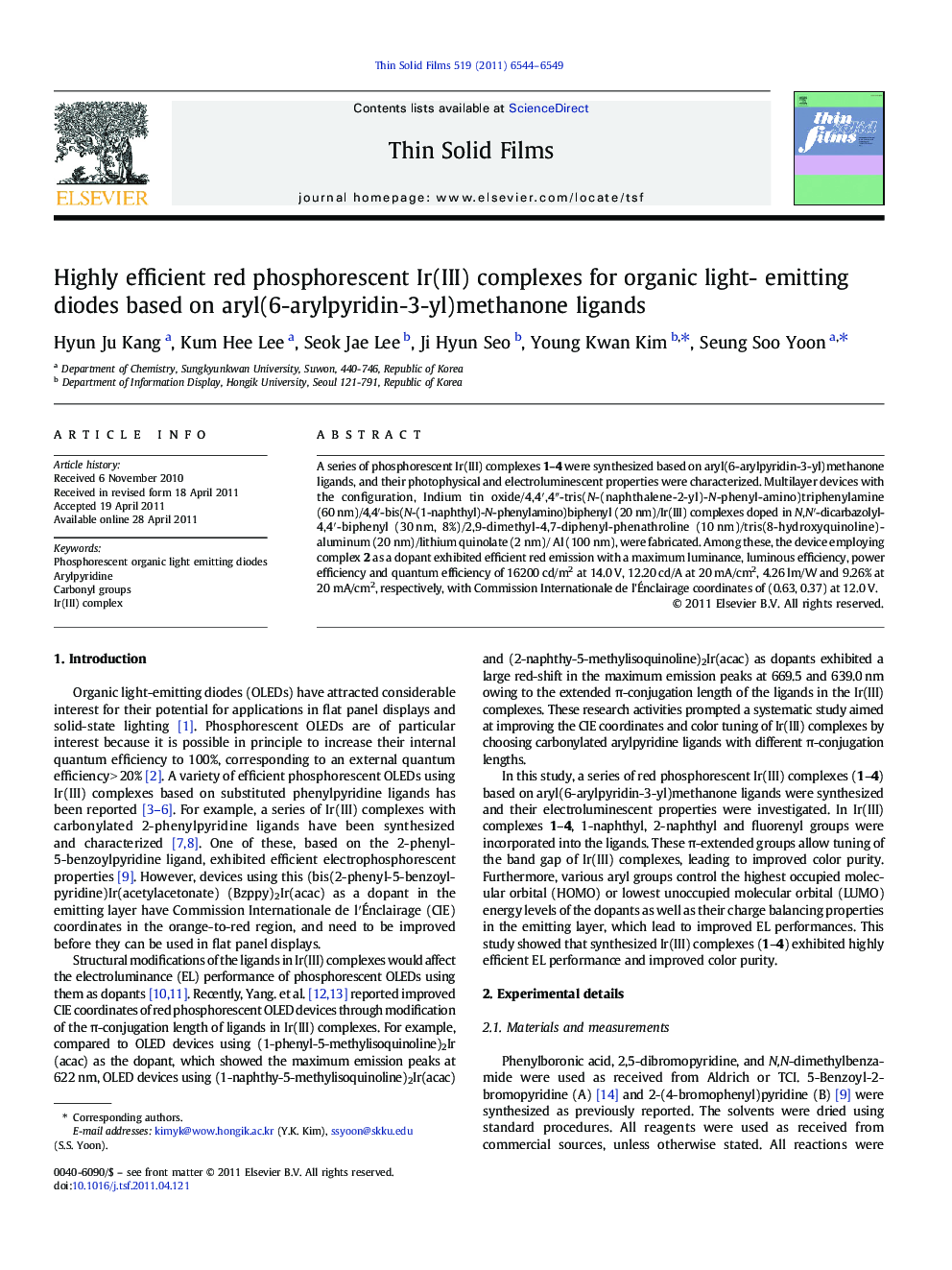| Article ID | Journal | Published Year | Pages | File Type |
|---|---|---|---|---|
| 1668309 | Thin Solid Films | 2011 | 6 Pages |
Abstract
A series of phosphorescent Ir(III) complexes 1-4 were synthesized based on aryl(6-arylpyridin-3-yl)methanone ligands, and their photophysical and electroluminescent properties were characterized. Multilayer devices with the configuration, Indium tin oxide/4,4â²,4â³-tris(N-(naphthalene-2-yl)-N-phenyl-amino)triphenylamine (60Â nm)/4,4â²-bis(N-(1-naphthyl)-N-phenylamino)biphenyl (20Â nm)/Ir(III) complexes doped in N,Nâ²-dicarbazolyl-4,4â²-biphenyl (30Â nm, 8%)/2,9-dimethyl-4,7-diphenyl-phenathroline (10Â nm)/tris(8-hydroxyquinoline)-aluminum (20Â nm)/lithium quinolate (2Â nm)/ Al (100Â nm), were fabricated. Among these, the device employing complex 2 as a dopant exhibited efficient red emission with a maximum luminance, luminous efficiency, power efficiency and quantum efficiency of 16200Â cd/m2 at 14.0Â V, 12.20Â cd/A at 20Â mA/cm2, 4.26Â lm/W and 9.26% at 20Â mA/cm2, respectively, with Commission Internationale de l'Ãnclairage coordinates of (0.63, 0.37) at 12.0Â V.
Related Topics
Physical Sciences and Engineering
Materials Science
Nanotechnology
Authors
Hyun Ju Kang, Kum Hee Lee, Seok Jae Lee, Ji Hyun Seo, Young Kwan Kim, Seung Soo Yoon,
